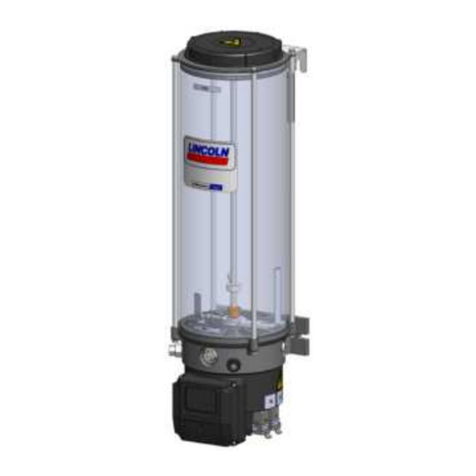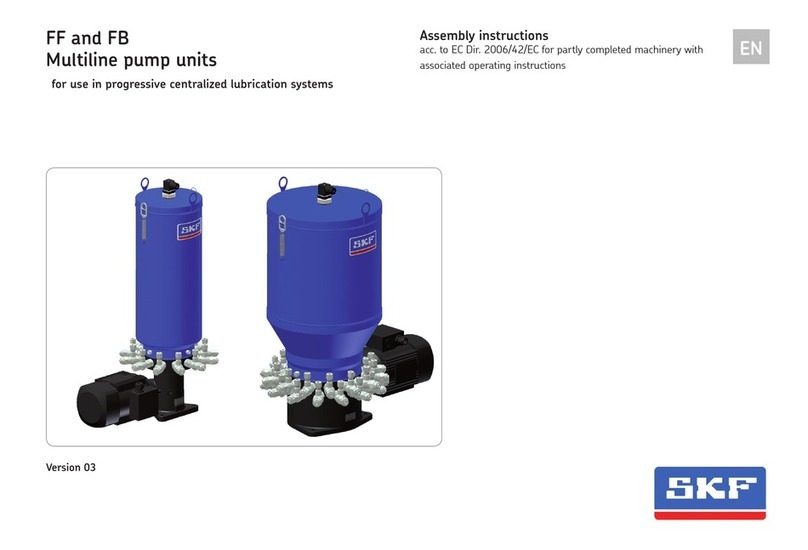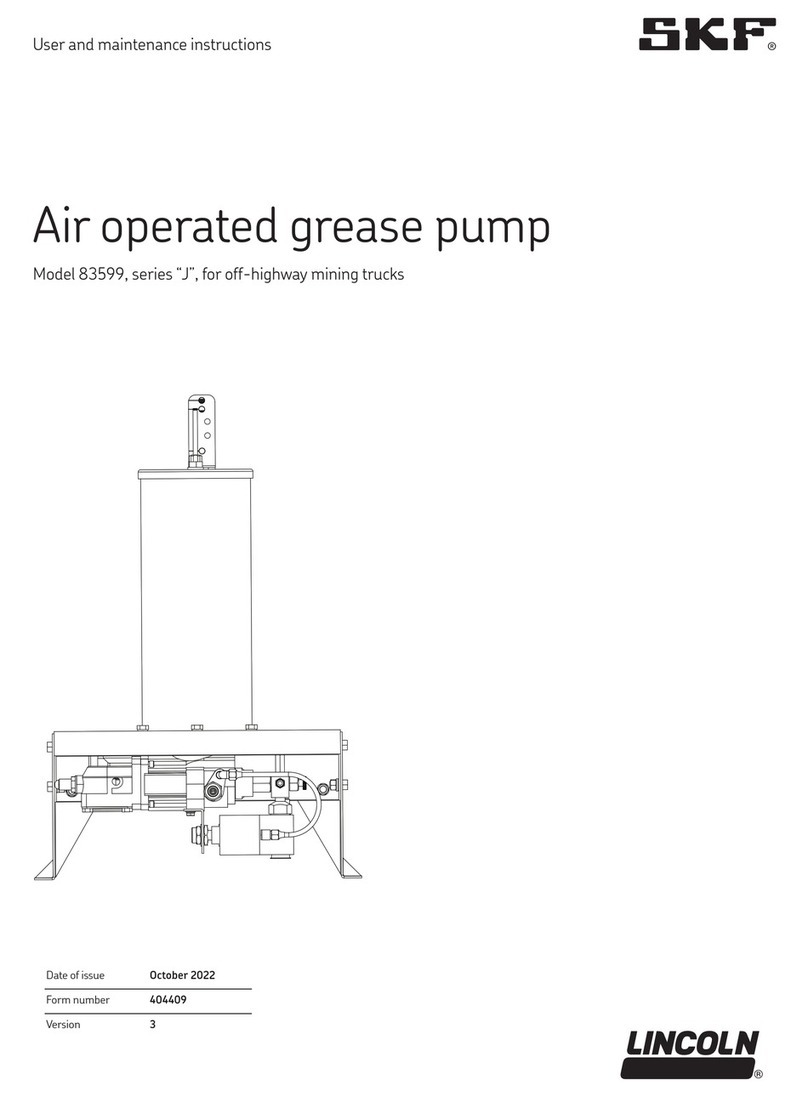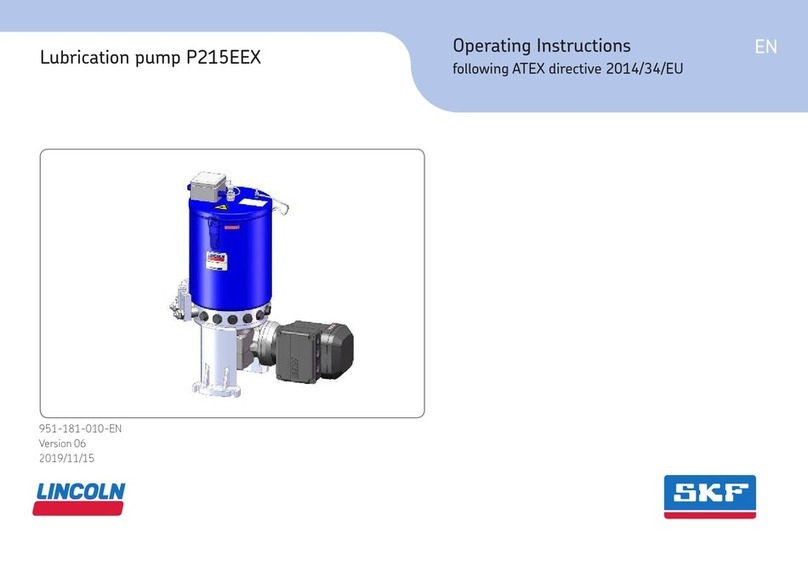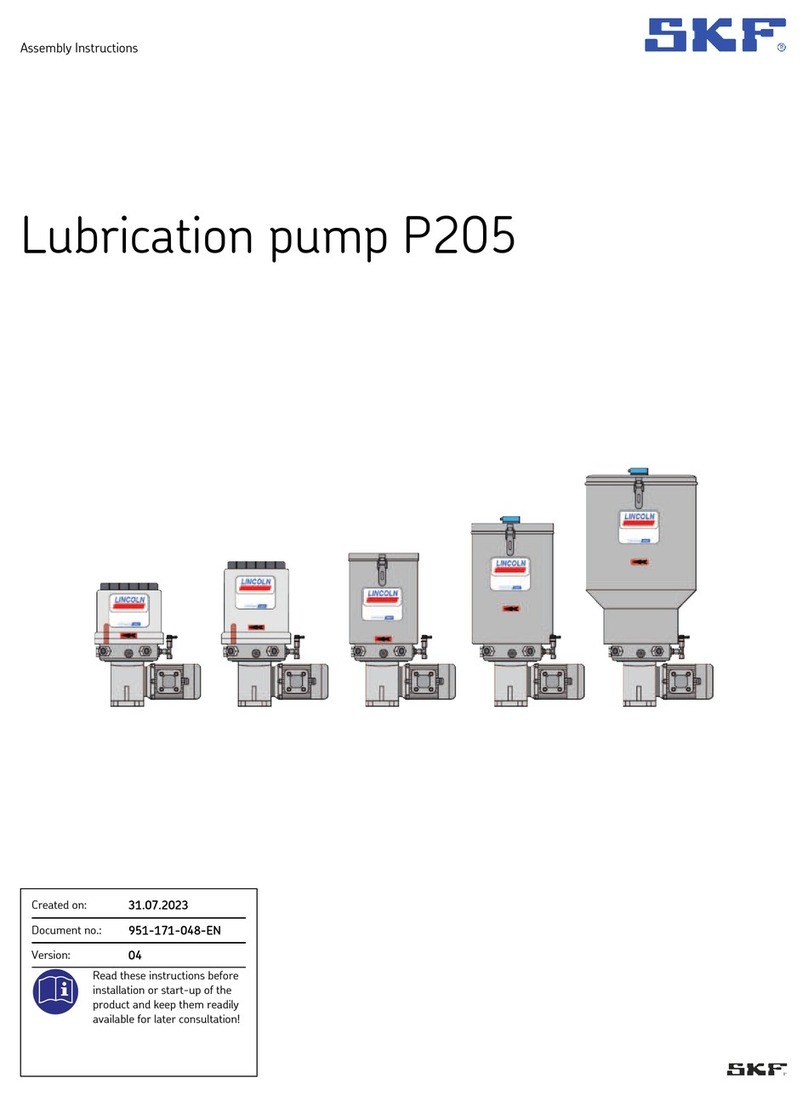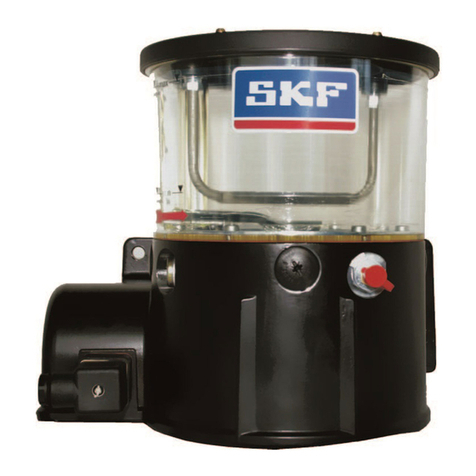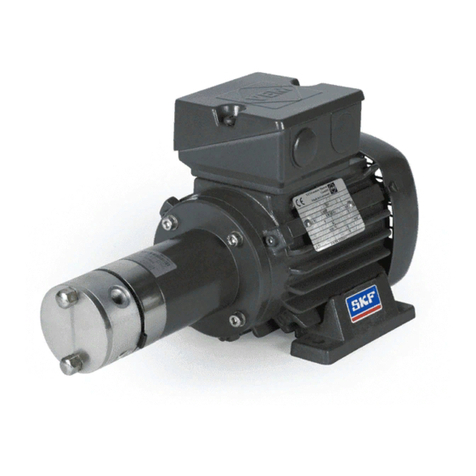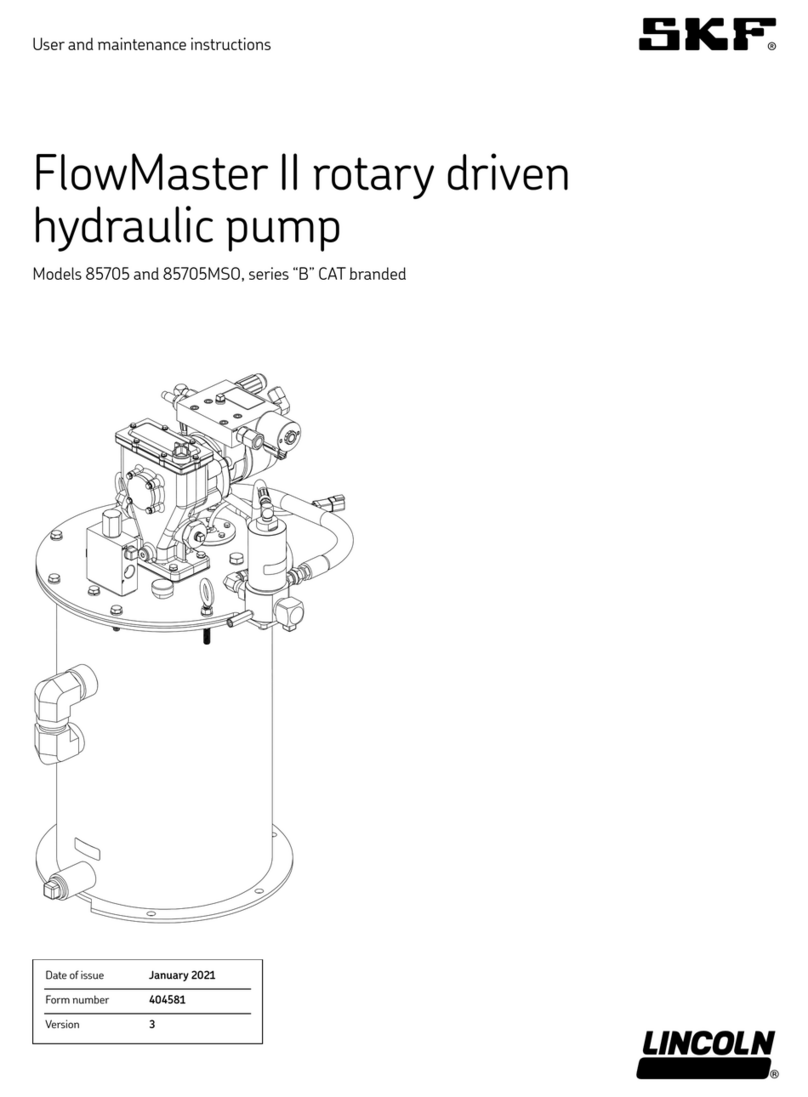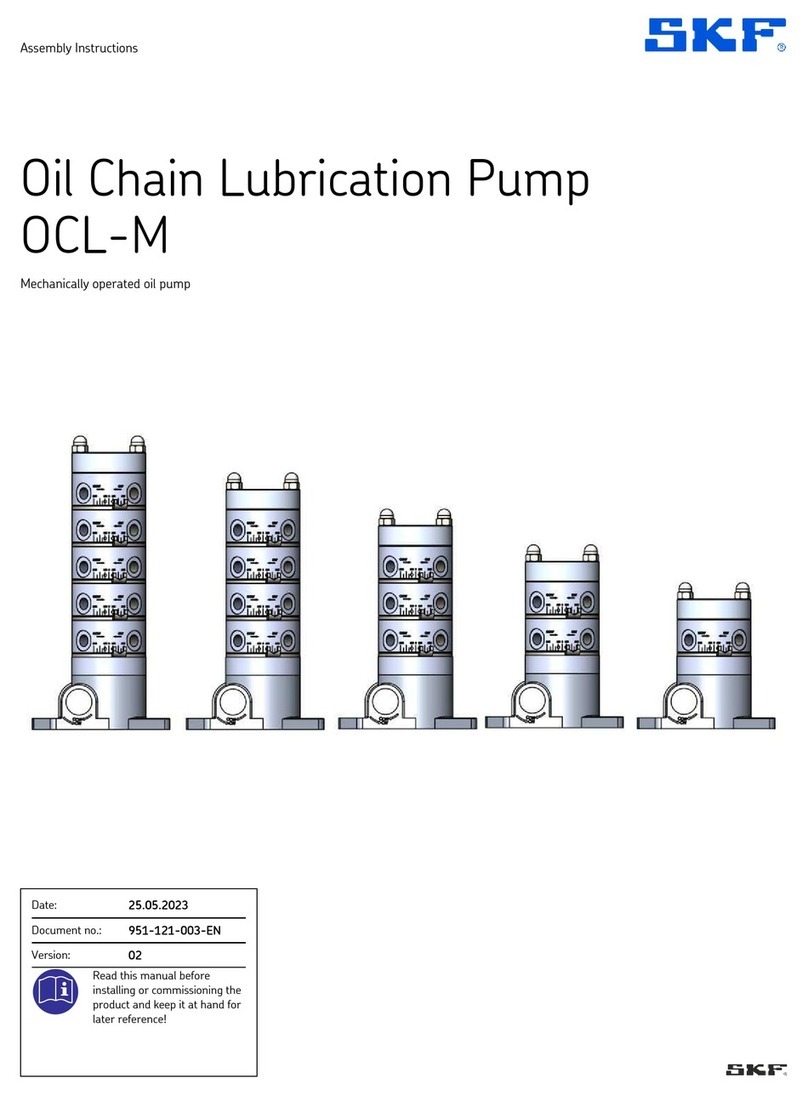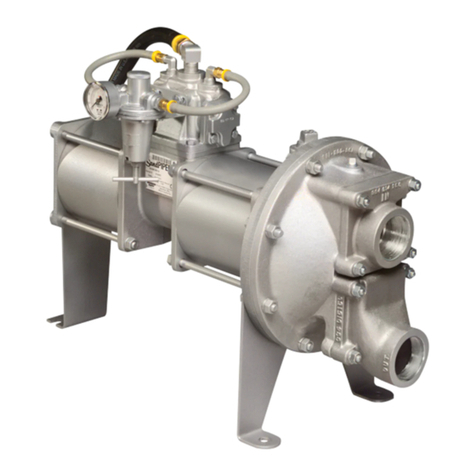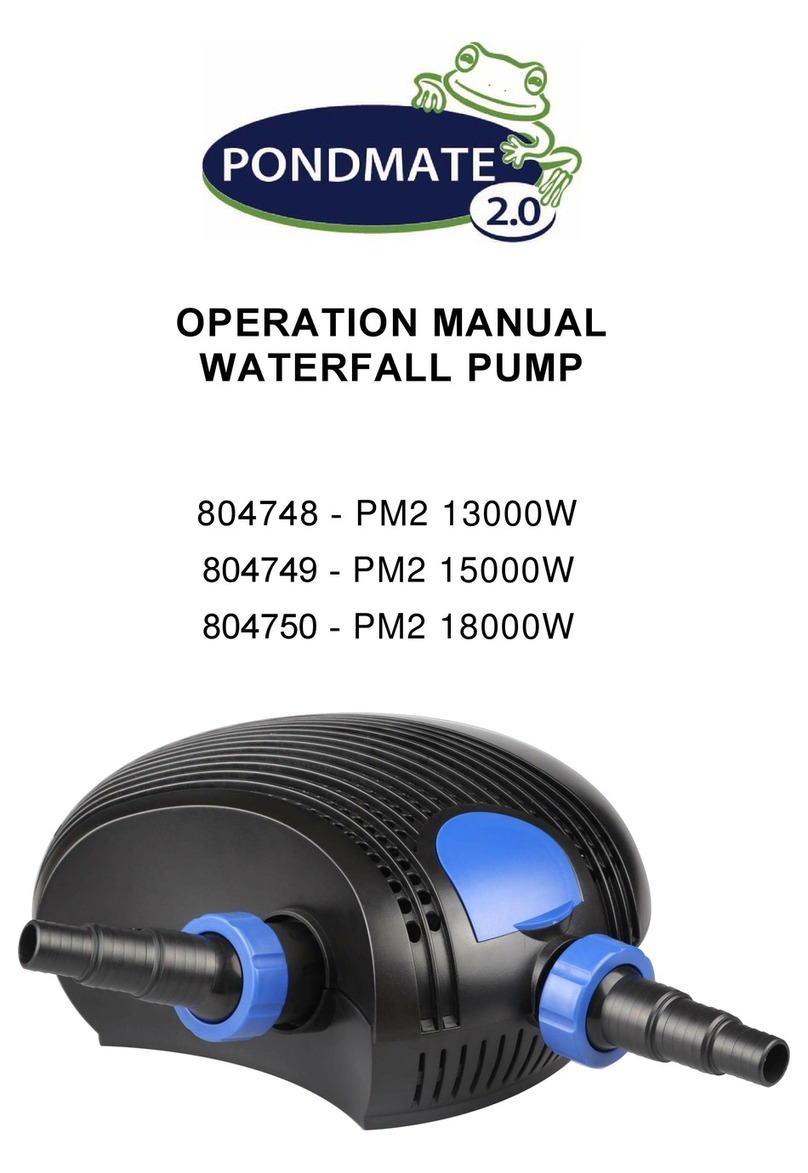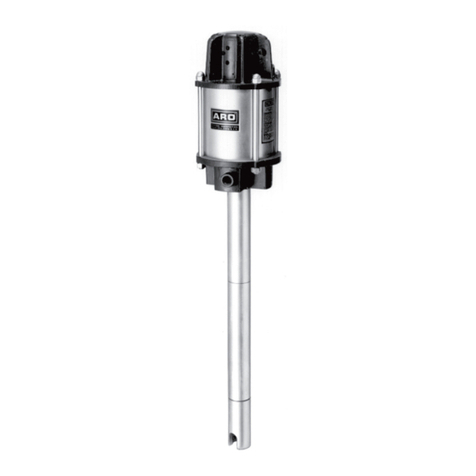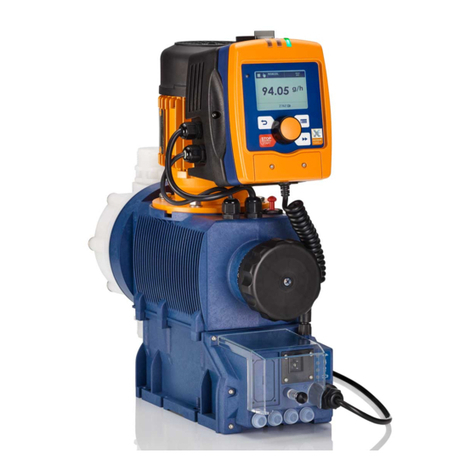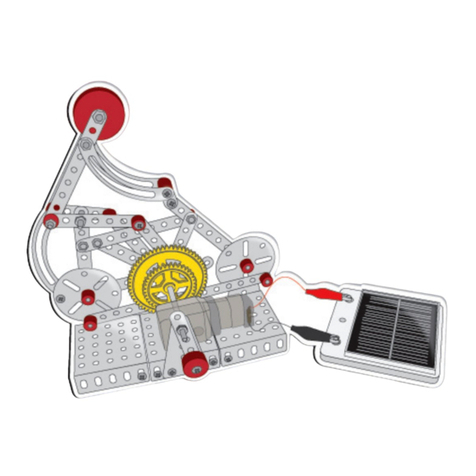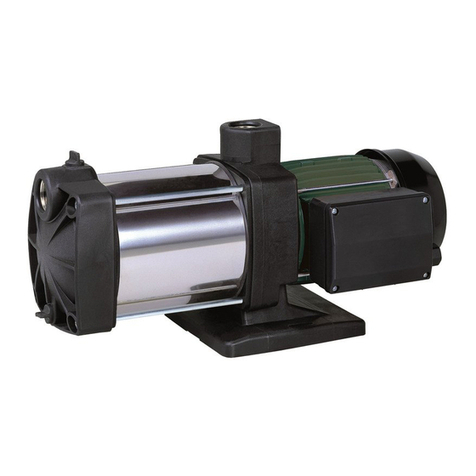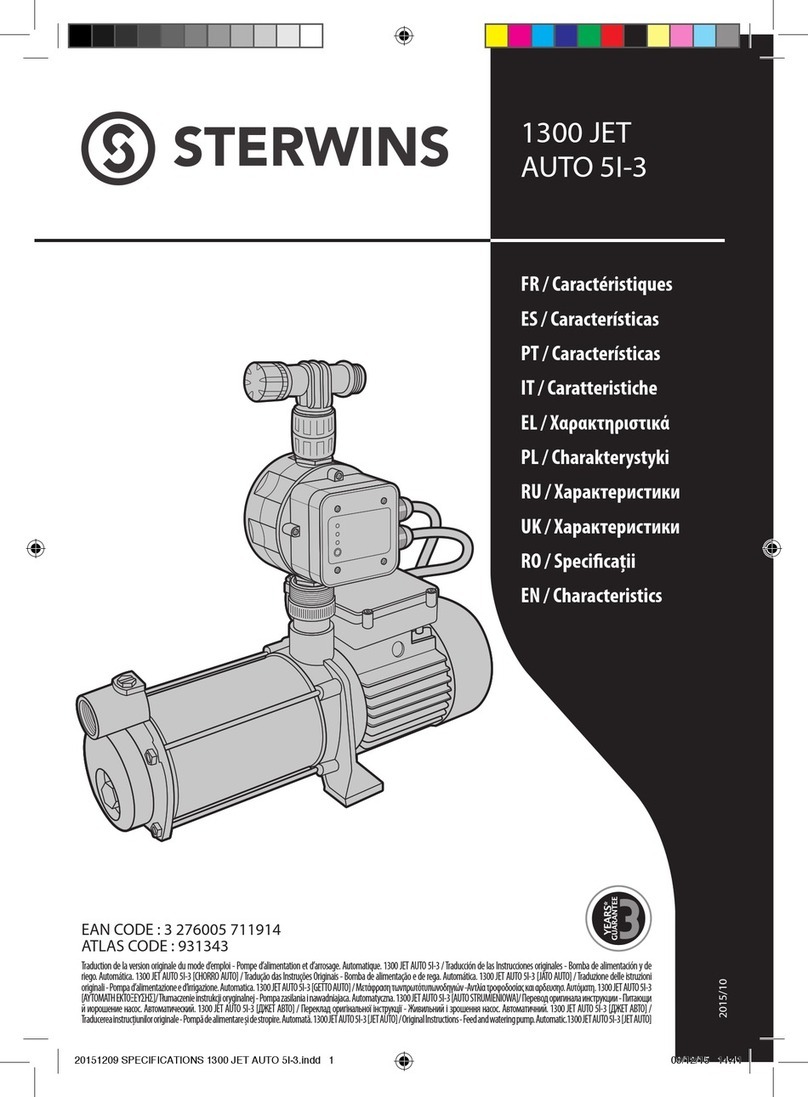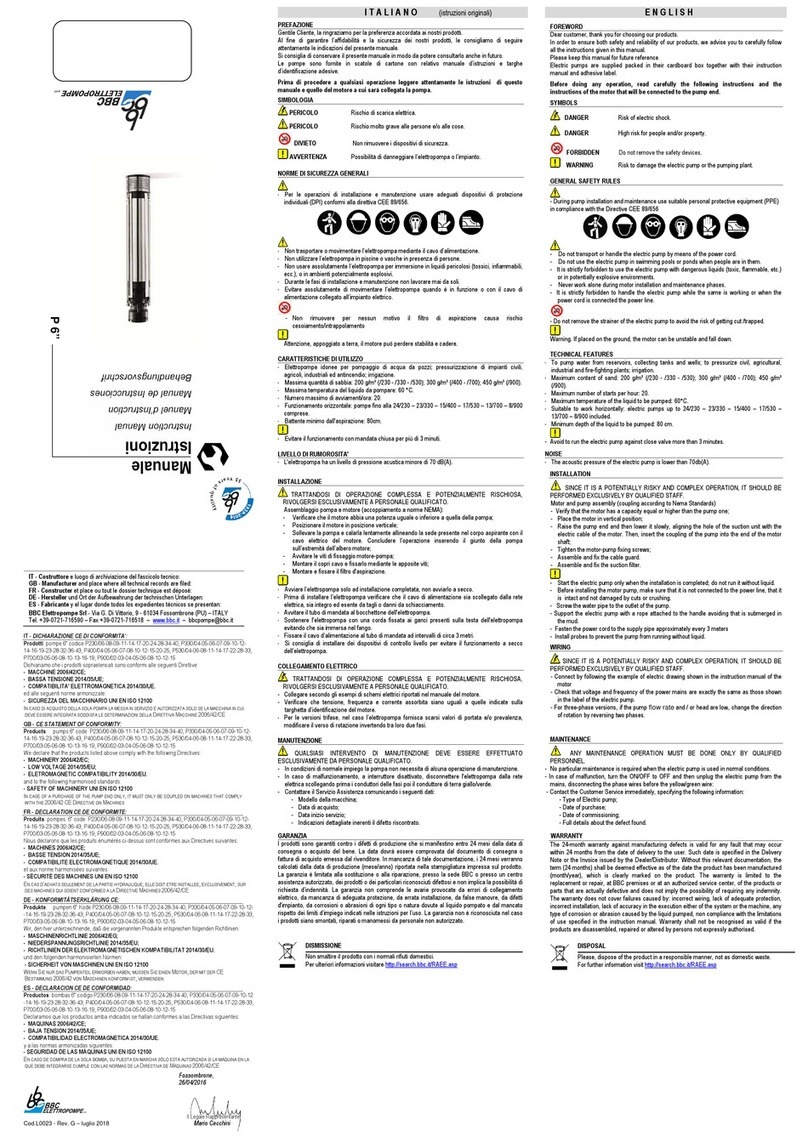SKF SKF-MPB-PUMP-1/1 User manual

MPB
Pneumatic barrel pump
(Enslish translation of operating and maintenance instructions compliant with EU Directive
2006/42/EC)

TABLE OF CONTENTS
EU DECLARATION OF CONFORMITY...........................................................................................................4
EU DECLARATION OF CONFORMITY...........................................................................................................5
Legal disclosure ..............................................................................................................................................6
Explanation of symbols, signs and abbreviations.......................................................................................7
Safety instructions ........................................................................................................................................10
5.1 General safety instructions...........................................................................................................................10
5.2 General behaviour when handling the product.............................................................................................10
5.3 Intended use.................................................................................................................................................10
5.4 Foreseeable misuse .....................................................................................................................................10
5.5 Modifications to the product..........................................................................................................................11
5.6 Other applicable documents.........................................................................................................................11
5.7 Notes concerning the type identification plate..............................................................................................11
5.8 Persons authorised to operate the device....................................................................................................12
5.8.1 Operator.................................................................................................................................................12
5.8.2 Mechanical specialist.............................................................................................................................12
5.8.3 Electrician...............................................................................................................................................12
5.8.4 Providing briefing for external technicians.............................................................................................12
5.8.5 Provision of personal protective equipment...........................................................................................12
5.9 Operation......................................................................................................................................................12
5.9.1 Stopping the pump in an emergency.....................................................................................................12
5.9.2 Transport, installation, maintenance, malfunctions and repairs ............................................................12
5.10 Commissioning and daily start-up ..............................................................................................................13
5.11 Cleaning......................................................................................................................................................13
Lubricants ......................................................................................................................................................15
6.1 General information......................................................................................................................................15
6.2 Lubricant selection........................................................................................................................................15
6.3 Material compatibility....................................................................................................................................16
6.4 Ageing of lubricants......................................................................................................................................16
MPB pump general description....................................................................................................................17
Commissioning..............................................................................................................................................18
Main components..........................................................................................................................................19
Periodic inspections....................................................................................................................................20
Troubleshooting ..........................................................................................................................................20
11.1 Malfunctions................................................................................................................................................20
11.2 Troubleshooting table.................................................................................................................................20
Technical information .................................................................................................................................21
12.1 Specifications table.....................................................................................................................................21
12.2 Pump output curve......................................................................................................................................22
12.3 MPB pump configurations ..........................................................................................................................23
12.4 Designation and order codes......................................................................................................................24
Shutdown, decommissioning and storage...............................................................................................25
13.1 Temporary shutdown..................................................................................................................................25
13.2 Final decommissioning...............................................................................................................................25
13.3 Storage .......................................................................................................................................................25

Spare parts...................................................................................................................................................26
Pneumatic barrel pump 1:20 ......................................................................................................................27
15.1 MPB 1:20 pump general description ..........................................................................................................27
15.2 Commissioning...........................................................................................................................................28
15.3 Main components .......................................................................................................................................29
15.4 Technical specifications of MPB 1:20.........................................................................................................30
15.5 Specifications table.....................................................................................................................................30
15.6 Output curve of MPB 1:20 ..........................................................................................................................31
15.7 MPB 1:20 pump, configuration options.......................................................................................................32
15.8 Designation and order codes......................................................................................................................33
15.9 Spare parts MPB 1:20 ................................................................................................................................34

4
EU DECLARATION OF CONFORMITY
Original Manufacturer’s Declaration of Device Intended as Machinery (Machinery
Directive 2006/42/EC, Annex II A)
Manufacturer
Oy SKF Ab Finland, Lubrication Product Division
Teollisuustie 6, FI-40951 Muurame, Finland
declares that:
SKF MPB PUMP
Designation: Pneumatically-operated barrel pump for lubricants
Type: SKF–MPB–PUMP-1/X
Type designations: SKF–MPB–PUMP-1/1; SKF–MPB–PUMP-1/4; SKF–MPB–PUMP-1/8
Date of manufacture: [The model indicated in the type identification plate] complies with the following basic
safety and health requirements of the EC machinery directive 2006/42/EC at the time when first being
launched in the market.
1.1.2; 1.1.3; 1.1.5; 1.3.1; 1.3.2; 1.3.4; 1.3.7; 1.5.3; 1.5.4; 1.6.1; 1.7.1; 1.7.2; 1.7.3; 1.7.4
The relevant technical documentation has been compiled in accordance with Annex VII part A of the
directive. Upon justifiable request, these special technical documents can be forwarded to the respective
national authorities. The person empowered to assemble the technical documentation on behalf of the
representative of the manufacturer is RD Manager, Product Development Nordic. See the manufacturer's
address.
Furthermore, the following directives and harmonised standards were applied in the respective applicable
areas:
Machinery Directive 2006/42/EC: EN ISO 12100-1/A1, EN ISO 12100-2/A1
Pneumatic power transmission: EN ISO 4414:2011-4
If changes not approved by the manufacturer are made to the product, the validity of the EC Declaration of
Conformity will cease.
In Muurame 21 February 2017
Place Time
Juha Kärkkäinen
R&D Manager, Product Development Nordic
SKF Lubrication Product Division

5
EU DECLARATION OF CONFORMITY
Original Manufacturer’s Declaration of Device Intended as Machinery (Machinery
Directive 2006/42/EC, Annex II A)
Manufacturer
Oy SKF Ab Finland, Lubrication Product Division
Teollisuustie 6, FI-40951 Muurame, Finland
declares that:
SKF MPB–PUMP-1:20
Designation: Pneumatically-operated barrel pump for lubricants
Type: SKF–MPB–PUMP-1/1
Type designations: SKF–MPB–PUMP-1/1-1:20
Date of manufacture: [The model indicated in the type identification plate] complies with the following basic
safety and health requirements of the EC machinery directive 2006/42/EC at the time when first being
launched in the market.
1.1.2; 1.1.3; 1.1.5; 1.3.1; 1.3.2; 1.3.4; 1.3.7; 1.5.3; 1.5.4; 1.6.1; 1.7.1; 1.7.2; 1.7.3; 1.7.4
The relevant technical documentation has been compiled in accordance with Annex VII part A of the
directive. Upon justifiable request, these special technical documents can be forwarded to the respective
national authorities. The person empowered to assemble the technical documentation on behalf of the
representative of the manufacturer is RD Manager, Product Development Nordic. See the manufacturer's
address.
Furthermore, the following directives and harmonised standards were applied in the respective applicable
areas:
Machinery Directive 2006/42/EC: EN ISO 12100-1/A1, EN ISO 12100-2/A1 Pneumatic power
transmission: EN ISO 4414:2011-4
If changes not approved by the manufacturer are made to the product, the validity of the EC Declaration of
Conformity will cease.
Muurame 5 July 2018
Place Time
Juha Kärkkäinen
R&D Manager, Product Development Nordic
SKF Lubrication Product Division

6
Legal disclosure
Manufacturer
Oy SKF Ab Finland, Lubrication Product Division
Teollisuustie 6
FI-40951 MUURAME
Finland
Tel: +358 20 7400 800
Fax: +358 20 7400 899
E-mail: skf-lube@skf.com
www.skf.com/fi/lubrication
Training courses
In order to provide a maximum of safety and economic viability, SKF provides detailed training courses.
Attending the training courses is recommended. For further information, please contact the provided SKF
Service address.
Copyright
© SKF. All rights reserved.
Warranty and liability
Oy SKF Ab assumes no liability, nor will the warranty provided cover any loss in the following cases:
•The system or component has been used for something other than its intended purpose.
•The system or component has not been installed, commissioned, decommissioned, maintained or used
according to the instructions provided.
•Impure lubricants or materials not approved by Oy SKF Ab have been used in the system or component.
•The system or component has been incorrectly maintained or repaired.
•Parts other than Oy SKF Ab's original spare parts have been used in the system or component.
•The system or component has been altered in ways that Oy SKF Ab has not approved.
•The system or component has been used outside the specified operating limits.
•The system or component has not been stored according to the storage instructions herein.
Notes related to the operating instructions
The present operating instructions are original operating instructions of the manufacturer pursuant to
Machinery Directive 2006/42/EC. The instructions are part of the described products and must be kept in an
accessible location for further use.
Disclaimer
The manufacturer shall not accept any liability for damages caused by the following actions by the customer:
•accidents, negligent or inappropriate use, assembly, operation, configuration, maintenance or repairs,
•improper or late response to malfunctions,
•unauthorised modifications to the product,
•intent or negligence, and
•the use of non-original (non-SKF) spare parts.
Liability for loss or damage resulting from the use of our products is limited to the maximum purchase price.
Liability for consequential damages of any kind is excluded.

7
Explanation of symbols, signs and
abbreviations
The following symbols are used in the safety instructions included in this manual to highlight conditions which
are potentially harmful to people, materials or the environment.
Please follow the instructions provided especially in the highlighted conditions. Also, relate the safety
instructions to other operators.
General warning
Risk of electric shock
Risk of falling
Hot surface
Fire hazard
Use protective goggles
Use hearing protectors
Read the operating instructions before use
General note
Environmentally friendly disposal
Dispose of decommissioned
products in an
environmentally friendly way
Warning level Consequence Probability
DANGER Death, serious injury imminent
WARNING Death, serious injury possible
CAUTION Minor injury possible
ATTENTION Property damage possible

8
approx.
approximately
°C
degrees Celsius
°F
degrees Fahrenheit
i.e.
that is
K
Kelvin
Oz.
Ounce
etc.
et cetera
N
Newton
fl. oz.
fluid ounce
poss.
possibly
h
hour
in.
inch
incl.
including
s
second
psi
pounds per square inch
min.
minimum
d
day
sq.in.
square inch
max.
maximum
Nm
Newton metre
cu. in.
cubic inch
min
minute
ml
millilitre
mph
miles per hour
etc.
et cetera
ml/d
millilitre per day
rpm
revolutions per minute
e.g.
for example
cc
cubic centimetre
gal.
gallon
kW
kilowatt
mm
millimetre
lb.
pound
U
voltage
l
litre
hp
horse power
R
resistance
dB (A)
sound pressure level
kp
kilopond
I
current
>
greater than
fpsec
feet per second
V
volt
<
less than
W
watt
±
plus/minus
AC
alternating current
Ø
diameter
DC
direct current
kg
kilogram
A
ampere
rh
relative humidity
Ah
Ampere hour
≈
approximately
Hz
frequency [Hertz]
=
equal to
NC
normally closed
%
per cent
NO
normally open
‰
per mille
≥
equal to or greater than
≤
equal to or less than
mm2
square millimetre
Symbol Meaning
Instruction step
List item
Conditions which must be met before the activities
described in the title clause can be completed
Related factors, causes or consequences

9
Conversion factors
length 1 mm = 0.03937 in.
area 1 cm² = 0.155 sq.in
volume 1 ml = 0.0352 fl.oz.
1 l = 2.11416 pints (US)
mass 1 kg = 2.205 lbs
1 g = 0.03527 oz.
density 1 kg/cc = 8.3454 lb./gal (US)
1 kg/cc = 0.03613 lb./cu.in.
force 1 N = 0.10197 kp
pressure 1 bar = 14.5 psi
temperature °C = (°F–32) x 5/9
output 1 kW = 1.34109 hp
acceleration 1 m/s² = 3.28084 ft./s²
speed 1 m/s = 3.28084 fpsec.
1 m/s = 2.23694 mph

10
Safety instructions
5.1 General safety instructions
•These safety instructions should be read and followed by any persons entrusted with working on the
product and those who supervise or instruct the group of persons mentioned above. In addition, the
owner must ensure that the relevant personnel are fully familiar with the contents of the instructions
and have understood them. It is prohibited to commission or operate the product prior to reading the
instructions.
•These instructions must be kept for further use.
•The described products have been manufactured according to the state of the art. However, if the
products are used for other than their intended purpose, there may be risks which may result in
personal injury or property damage.
•Any malfunctions which may affect safety must be remedied immediately. In addition to these
instructions, general statutory regulations for accident prevention and environmental protection must
be observed.
5.2 General behaviour when handling the product
•Please follow these instructions whenever you use the product. If the product is not in proper technical
condition or you are unaware of the potential hazards, do not use the product.
•Familiarise yourself with the functions and operation of the product. All specified assembly and
operating steps must be competed in the indicated order.
•Any unclear points regarding proper condition or correct assembly/operation must be clarified.
Operation is prohibited until issues have been clarified.
•Prevent unauthorised access.
•Always wear personal protective equipment.
•Take the proper precautions and follow the instructions concerning the relevant task. Responsibilities
for different activities must be clearly defined and observed. Uncertainty is a major risk factor for
safety.
•Safeguards and other protective and emergency equipment must not be removed, modified,
disconnected or otherwise disabled. Their completeness and function must also be checked at regular
intervals.
•If a safeguard or other protective equipment has to be detached, it must be reattached and tested
immediately after the work is complete.
•Remedy any faults included in your area of responsibility. If the fault is beyond your competence,
notify your supervisor immediately of the fault.
•Never use parts of the centralised lubrication system or of the machine as standing or climbing aids.
5.3 Intended use
Supply of lubricants within a centralised lubrication system in accordance with the specifications, technical
data and limits stated in these instructions:
Usage is allowed exclusively for professional users in the frame of commercial and economic activities.
5.4 Foreseeable misuse
Any use differing from that stated in these instructions is strictly prohibited, particularly the following:
•use outside the indicated temperature range,
•use of non-specified lubricants,
•exceeding the maximum allowable operating pressure,
•use in continuous operation,
•use in areas with aggressive or corrosive materials (e.g. high ozone pollution),

11
•use in areas with harmful radiation (e. g. ionising radiation),
•feeding, forwarding, or storing hazardous substances and mixtures described in Annex I part 2–5 of
the CLP regulation (EG 1272/2008) and marked with warnings GHS01–GHS06 and GHS08
•feeding, forwarding or storing gases, liquefied gases, dissolved gases, vapours or fluids whose
vapour pressure exceeds normal atmospheric pressure (1,013 mbar) by more than 0.5 bar at the
maximum permissible operating temperature, and
•use in an explosion protection zone.
5.5 Modifications to the product
Unauthorised conversions or modifications may have unforeseeable effects on product safety and
functionality. Therefore, any unauthorised conversions or modifications are expressly prohibited.
5.6 Other applicable documents
In addition to these instructions, the following documents must be observed by the respective target group:
•operational instructions and approval rules
•safety data sheet (MSDS) of the lubricant used
Where appropriate:
•project planning documents
•instructions provided by the suppliers of purchased parts
•any documents of other components required to set up the centralised lubrication system
•other documents relevant for the integration of the product into the machine or system
5.7 Notes concerning
the type identification
plate
The type identification plate indicates the type
designation, order code and other key details of the
machine.
To make sure no information is lost if the type
identification plate becomes illegible, enter the
details in this manual:
Type _______________________________
Code _______________________________
Date of manufacture ___________________

12
5.8 Persons authorised to operate the device
5.8.1 Operator
An operator is a person who is qualified to carry out the functions and activities related to normal operation
based on his or her training, knowledge and experience. This includes avoiding possible hazards that may
arise during operation.
5.8.2 Mechanical specialist
A mechanical specialist is a person with appropriate professional education, knowledge and experience to
detect and avoid the hazards that may arise during transport, installation, commissioning, operation,
maintenance, repair and disassembly.
5.8.3 Electrician
An electrician is a person with appropriate professional education, knowledge and experience to detect and
avoid electrical hazards.
5.8.4 Providing briefing for external technicians
Prior to commencing any activities, external technicians must be informed by the end-user of its safety
provisions, applicable accident prevention procedures and the functions of the superordinate machine and its
protective devices.
5.8.5 Provision of personal protective equipment
The end-user must provide suitable personal protective equipment for the respective location of operation and
the purpose of operation.
5.9 Operation
The following must be observed during commissioning and operation:
•any information within this manual and the information within the referenced documents, and
•all laws and regulations that the end-user must observe.
5.9.1 Stopping the pump in an emergency
Conduct an emergency stop as follows:
•Cut off the pump’s pressurised air supply from the pressure air regulator.
5.9.2 Transport, installation, maintenance, malfunctions and repairs
•All relevant persons must be informed of the activity prior to starting any work. Observe the
precautionary operational measures and work instructions.
•Transport the products with suitable transportation and hoisting equipment using suitable work
methods.
•Maintenance and repair work can be subject to restrictions in low or high temperatures (e.g. changed
flow properties of the lubricant). Therefore, where possible, try to carry out maintenance and repair
work at room temperature.
•Before conducting any work, depressurise the product or machine into which the product will be
integrated and secure it against unauthorised activation.
•Ensure through suitable measures that movable or detached parts are immobilised during the work
and that no limbs can be caught in between if there are inadvertent movements.
•Assemble the product only outside of the operating range of moving parts, at an adequate distance

13
from sources of heat or cold. Be careful not to damage other units in the machine or vehicle or impair
their function during installation.
•Dry or cover wet, slippery surfaces accordingly.
•Cover hot or cold surfaces accordingly.
•Work on electrical components must be carried out by electrical specialists only. Observe any waiting
periods for discharging, if necessary. Carry out work on electrical components using voltage insulated
tools only.
•Make electrical connections only according to the information in the valid wiring diagram and taking
the relevant regulations and the local connection conditions into account.
•Do not touch cables or electrical components with wet or damp hands.
•Do not bypass any fuses. Replace fuses with same type and rating only.
•Do not drill holes to critical, load-bearing parts. Use existing boreholes whenever possible. Be careful
not to damage lines and cables when drilling.
•Observe possible abrasion points. Protect the parts accordingly.
•All components used must be suitable for use in:
– the system’s maximum operating pressure, and
– the system’s minimum and maximum ambient temperature range.
•No parts of the centralised lubrication system may be subjected to torsion, shear or bending.
•Before using any parts, check them for contamination, clean if necessary.
•Before installation, prime the hoses between the doser group and the lubrication point with lubricant.
This makes it easier to bleed the system of air afterwards.
•Observe the specified tightening torques. Use a calibrated torque wrench.
•When working with heavy parts, use suitable lifting tools.
•Avoid mixing up or wrong assembly of dismantled parts. Mark these parts accordingly.
5.10 Commissioning and daily start-up
Ensure that:
•All safety devices are complete and work properly.
•All connections are correctly connected.
•All parts have been correctly installed.
•All warning labels on the machine are complete, highly visible and undamaged.
•Replace illegible or missing warning labels without delay.
5.11 Cleaning
•There is a risk of fire and explosion when using flammable cleaning agents. Use only non-flammable
cleaning agents suitable for the purpose.
•Do not use aggressive cleaning agents.
•Do not use steam jet or high pressure cleaners. Electrical components may be damaged. Observe the
IP protection class.
•Cleaning work on energised components may be carried out by electrical specialists only.
•Mark damp areas accordingly.

14
Residual risk
Possible in lifecycle stage
Prevention/remedy
Personal injury / material damage
due to falling of raised parts
A, B, C, G, H, K
Keep unauthorised people away.
Make sure no one remains under
suspended parts or loads. Lift
parts with suitable and tested
lifting devices.
Personal injury / material damage
due to tilting or falling of the
product because of non-
observance of the stated
tightening torques
B, C, D, G
Observe the specified tightening
torques. Fasten the product to
components with adequate load-
bearing capacities only. If no
tightening torques are stated,
tightening torques for grade 8.8
screws apply.
Personal injury / material damage
due to electric shock from a
damaged connection cable
B, C, D, E, F, G, H
Check that the low level switch
connection cable is intact before
using the switch for the first time
and, after that, at regular
intervals. Do not mount the cable
to moving parts or at an abrasion
point. If this cannot be avoided,
use either spring coils or
protective conduits depending on
the circumstances.
Personal injury / damage to
material due to spilled or leaked
lubricant
B, C, D, F, G, H, K
When replacing the barrel, detach
and reattach lubricant feed lines
with care. Always use appropriate
hydraulic screw connections and
lubrication lines suitable for use in
the stated pressures. Do not
mount lubrication lines to moving
parts or abrasion points. If this
cannot be avoided, use either
flexible hose lines, spring coils or
protective conduits depending on
the circumstances.
Lifecycle stages: A = transport, B = installation, C = commissioning, D = operation, E = cleaning, F =
maintenance, G = fault, repair, H = decommissioning, K= disposal

15
Lubricants
6.1 General information
Different lubricants are used in different applications. In order to fulfil their tasks, lubricants must fulfil various
requirements to varying extents. The most important requirements for lubricants are:
•reduction of abrasion and wear
•corrosion protection
•noise minimisation
•protection against contamination and entry of foreign objects
•cooling (primarily for oils)
•longevity (physical/chemical stability)
•compatibility with as wide range of materials as possible
•economic and ecological aspects
6.2 Lubricant selection
SKF considers lubricants to be an element of system design. A suitable lubricant is selected already when
designing the machine and it forms the basis for centralised lubrication system planning.
The selection is made by the manufacturer/end-user of the machine, preferably together with the lubricant
supplier based on a defined requirement profile.
Should you have little or no experience with the selection of lubricants for centralised lubrication systems,
please contact SKF.
If required, we will be glad to support customers in selecting suitable components for feeding the selected
lubricant and planning and designing their centralised lubrication system.
You will avoid possible costly downtimes caused by damage to your machine/system or the centralised
lubrication system.
Only lubricants specified for the product may be used. Unsuitable
lubricants may lead to product failure.
Do not mix lubricants. This may have unforeseeable effects on the
usability and therefore on the function of the centralised lubrication
system.
Due to the multitude of possible additives, it is possible that individual
lubricants, which according to the manufacturer's data sheets match the
system’s specification, might not in fact suitable for use in centralised
lubrication systems (e.g. incompatibility between synthetic lubricants and
materials). To avoid this problem, always use lubricants tested by SKF.

16
6.3 Material compatibility
Lubricants must generally be compatible with the following materials:
•steel, grey iron, brass,
•copper, aluminium
•NBR, FPM, ABS, PA, PU
6.4 Ageing of lubricants
After a prolonged downtime of the machine, the lubricant may no longer be suitable for use due to chemical or
physical ageing and must therefore be inspected before the system is recommissioned. We recommend
inspecting the lubricant already after a week’s downtime.
If you suspect that the lubricant is no longer suitable, replace it prior to recommissioning and, if necessary,
perform initial lubrication manually.
It is possible for lubricants to be tested in the company's laboratory for their suitability for being pumped in
centralised lubrication systems (e.g. no "bleeding").
Please contact SKF if you have further questions regarding lubricants.
An overview of the lubricants tested by SKF is also available upon request.

17
MPB pump general description
The purpose of the pump is to supply lubricant to a centralised lubrication system. The pump is suitable for
greases up to grade 000-2 (NLGI), and it has both an outlet connection (pressure connection, “P”) and a
return connection (tank connection, “T”). Its pressure ratio is 65:1, which means that the pump's maximum
allowable lubricant pressure (≈300 bar, 30 MPa) is achieved at 4.5 bar air pressure. The minimum air
pressure required for operation is 2 bar (0.2 MPa).
SKF-MPB-PUMP is composed of an air motor and a pump unit. The air motor is controlled by a pneumatic
valve, which in turn is controlled by a mechanical valve controller. The mechanical valve controller follows the
motion of the air motor’s air piston. A connecting rod transmits the motion of the air piston to the pump unit's
piston assembly, which pressurises the lubricant. The air motor has been designed to be lubrication-free,
which means that no lubricator is needed in the air filter regulator assembly.
The pump is intended for central lubrication systems consisting of a pump and lid set, air filter regulator and
lubrication system control unit (each sold separately). Installing the MPB pump in an existing system driven by
an SKF-EPB pump requires an additional installation kit, which includes the components required for
connecting the pump in the lubrication system.
ATTENTION
The pump is intended for intermittent use only. If the pump is used continuously at high
pressure, or moist pressurised air is used, the pneumatic valve may freeze, causing a
malfunction.

18
Commissioning
The pump is activated when air (minimum pressure: 2 bar) is supplied to its pressurised air inlet (4). The pump
pressurises the lubricant, transferring it through the lubricant outlet (5) into the lubrication system. The pump
also includes a tank connection (6). During depressurisation, lubricant returns through the tank connection into
the pump pipe and, from there, back to the lubricant barrel. Lubricant pressure can be adjusted from the
pressure air regulator (sold separately). When used in a central lubrication system, the pump's air supply is
controlled by a control centre (sold separately) following user-defined lubrication values.
The pump can be equipped with a low lubricant level alarm (sold separately), which is connected to the
lubrication system’s control centre.
Figure 1: Connections
Pressurised air inlet (4)
•Quick connector, 8 mm, G1/4”
Hydraulic connections (5, 6):
•(5), P = Pressure, lubricant outlet, G1/4”, basic connector, 12 L
•(6), T = Tank, lubricant inlet, G1/4”, basic connector, 12 L

19
Main components
MPG pump consists of the following components (Figure 2):
Item Description
1
Air motor
2
Pneumatic valve
3
Valve controller
4
Pressurised air inlet, G1/4”, Ø8 quick
connector
5
Pressure connection (hydraulic outlet), G1/4”,
basic connector, 12L
6
Tank connection (return inlet), G1/4”, basic
connector, 12L
7
Pump unit
8
Air exhaust muffler
9
Inductive sensor (included in the ECO lid set)
10
Low level switch bracket (included in the ECO
lid set)
Figure 2, Main components

20
Periodic inspections
Monthly inspections
•Inspect the pressure air regulator and drain it of water.
•Check the pump’s operation.
•Check the pump and lubrication system for leaks.
When replacing the barrel (in addition to the above):
•Clean the grease filter and the filter cartridge and replace them if necessary.
Troubleshooting
WARNING
Before addressing the following malfunctions, turn off the power from the control and
pumping centre, isolate the pressurised air supply and depressurise the lubrication line
connected to the pump outlet. Any residual pressure in the system when opening or
disconnecting components may cause components to be thrown or lubricant to spray,
causing injury to people or damage to the environment.
11.1 Malfunctions
In case of a malfunction:
– Check the air pressure and the condition of the air lines.
– Check that the grease filter and the hydraulic lines connected to the pump outlet are not clogged.
– If the problem persists, contact your Oy SKF Ab representative.
11.2 Troubleshooting table
Table 1: Troubleshooting
Description of malfunction Cause of malfunction Solution
The pump does not start.
Pressurised air has been cut off.
Insufficient air pressure.
Turn on the air supply and set the
pressure to 2–4.5 bar.
Check that the pressure at the
pressure air regulator is 2–4.5 bar.
Check the air supply hoses for
leaks.
The pump is activated, but stops
shortly.
Insufficient air pressure.
Check that the pressure at the
pressure air regulator is 2–4.5 bar.
Check the air supply hoses for
leaks.
This manual suits for next models
4
Table of contents
Other SKF Water Pump manuals

SKF
SKF Lincoln FlowMaster II Instruction Manual
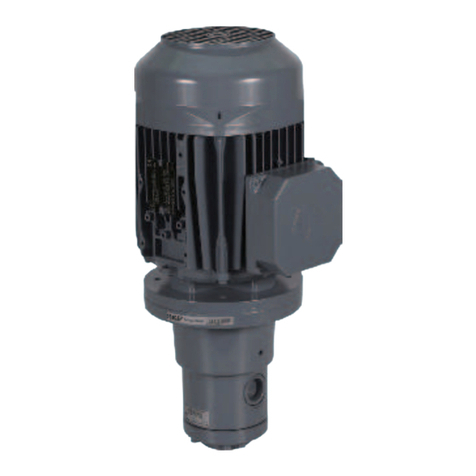
SKF
SKF 143 Series Installation guide

SKF
SKF Lincoln FlowMaster II Instruction Manual

SKF
SKF THAP 030E User manual

SKF
SKF MKU Series User manual

SKF
SKF TMJL 100 User manual

SKF
SKF THHP 300 User manual

SKF
SKF Lincoln P653S Instruction Manual

SKF
SKF 143 Series User manual
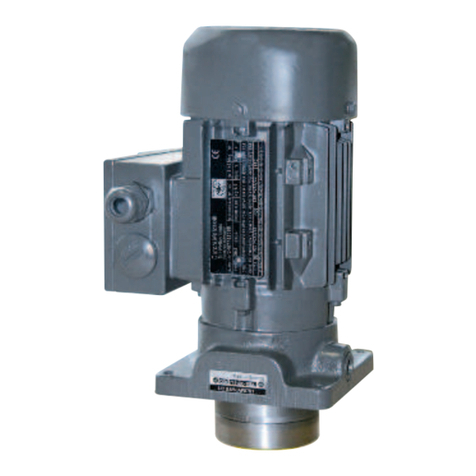
SKF
SKF UC User manual
Popular Water Pump manuals by other brands
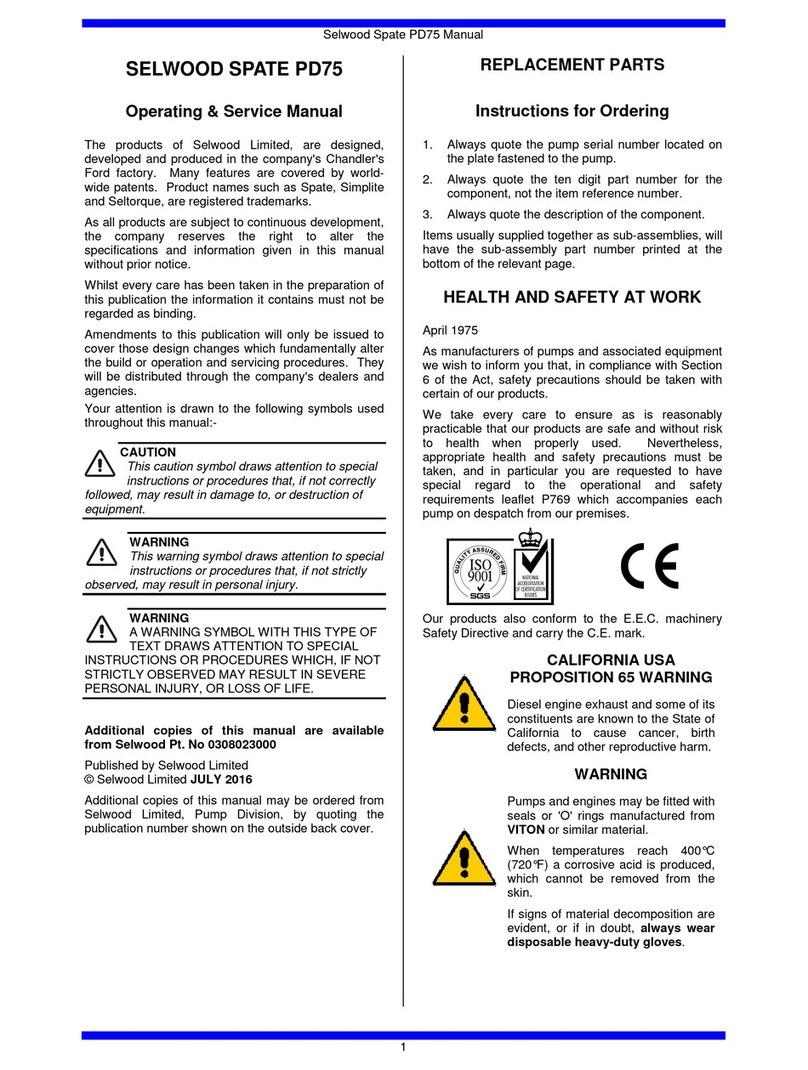
SELWOOD
SELWOOD SPATE PD75 instruction manual

KNF
KNF NF 1.300 EX Operating and installation instructions
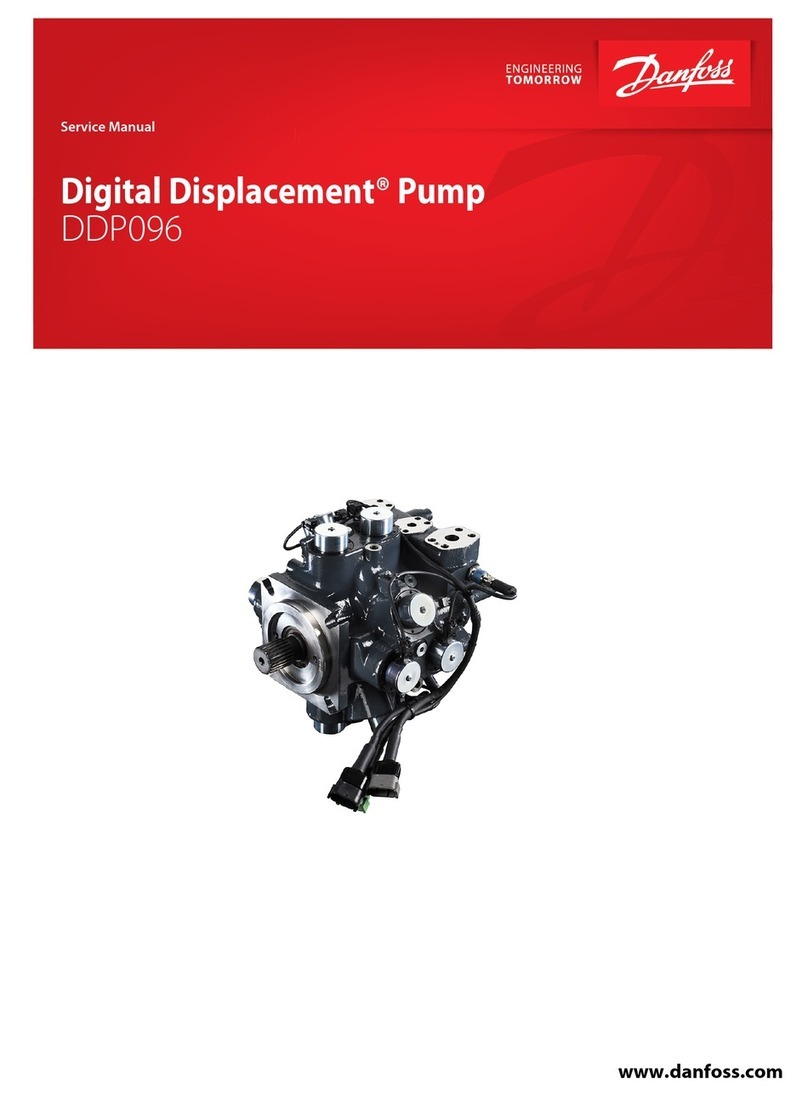
Danfoss
Danfoss DDP096 Service manual
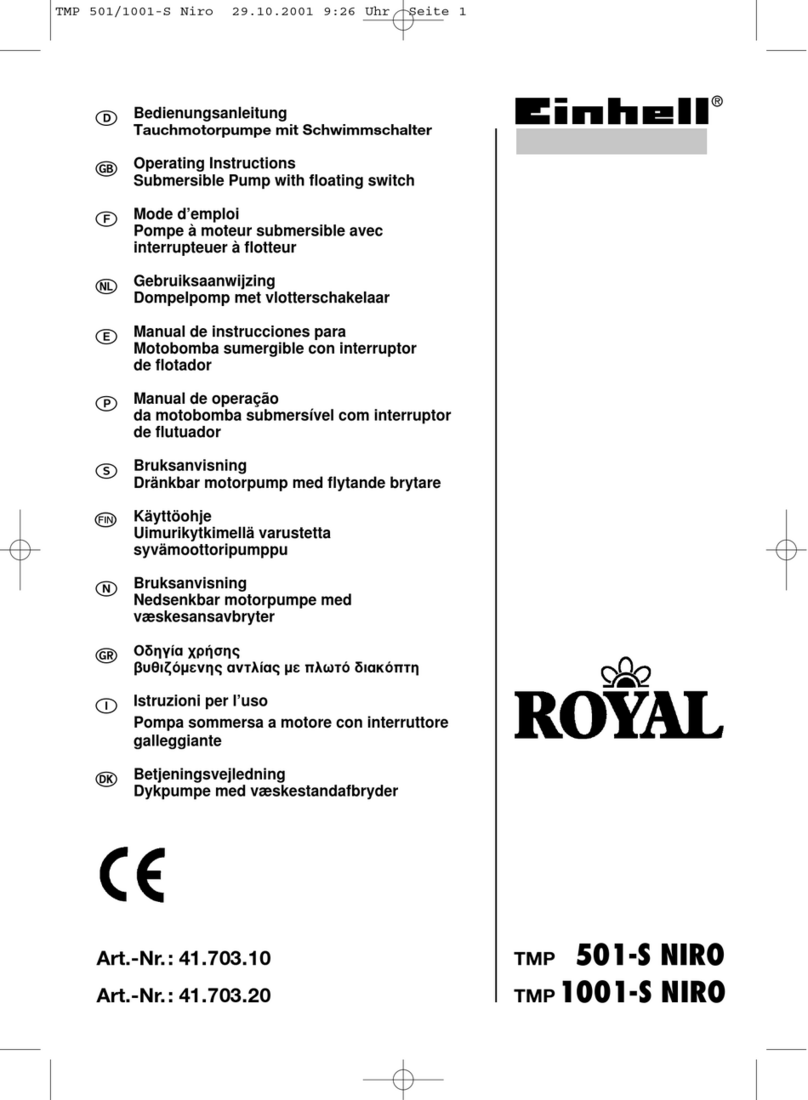
EINHELL
EINHELL ROYAL TMP 501-S NIRO operating instructions
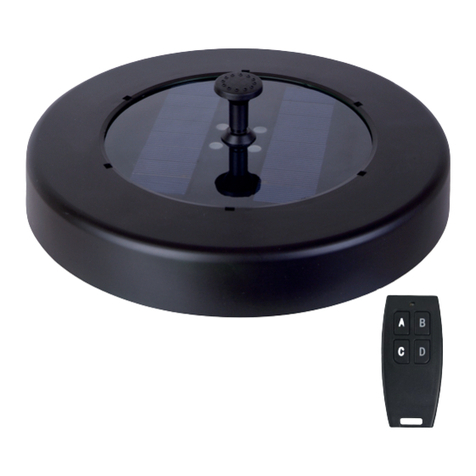
T.I.P.
T.I.P. SSI 600 LED Translation of original operating instructions
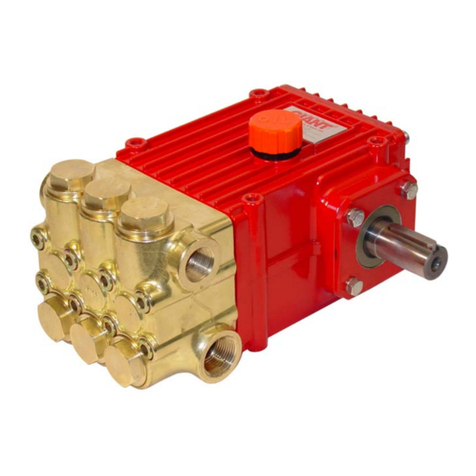
Giant
Giant P435B operating instructions
